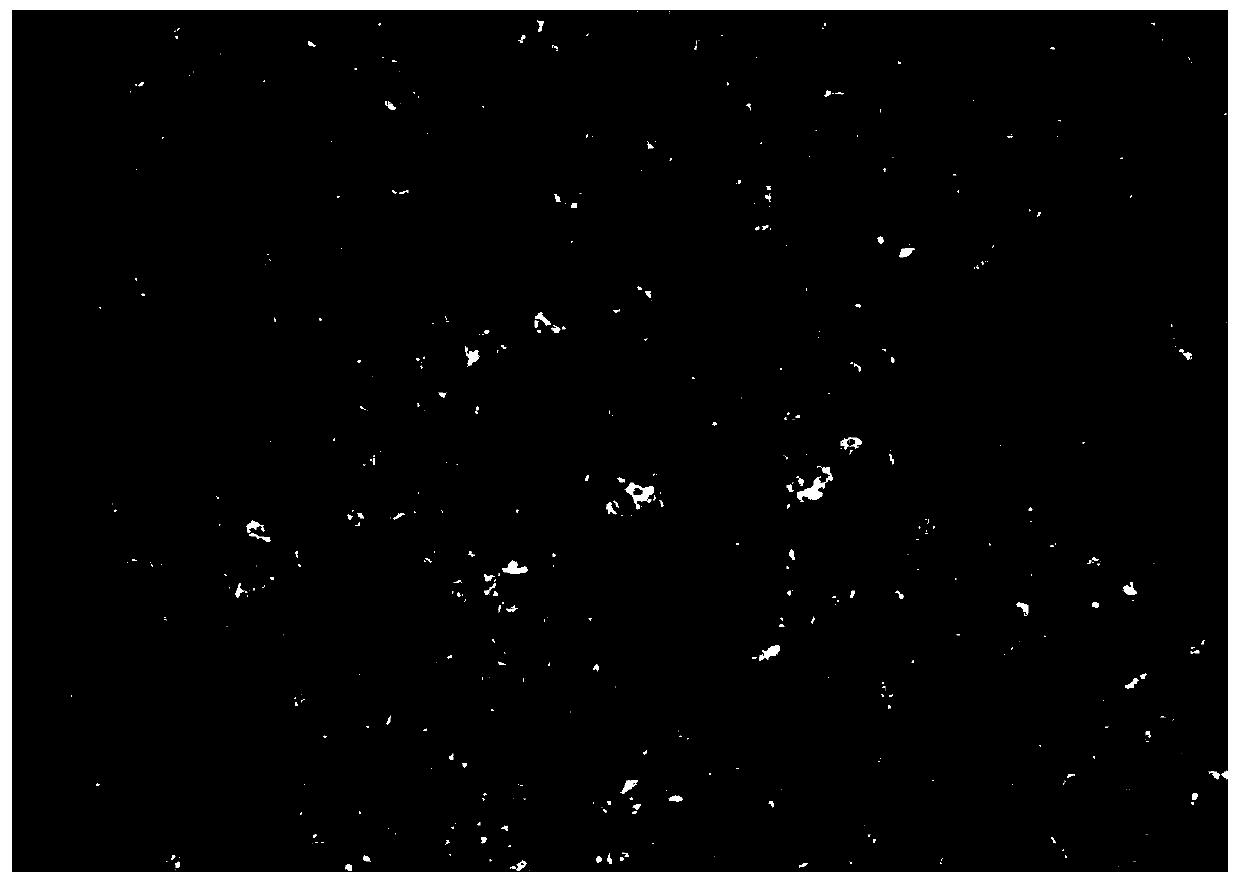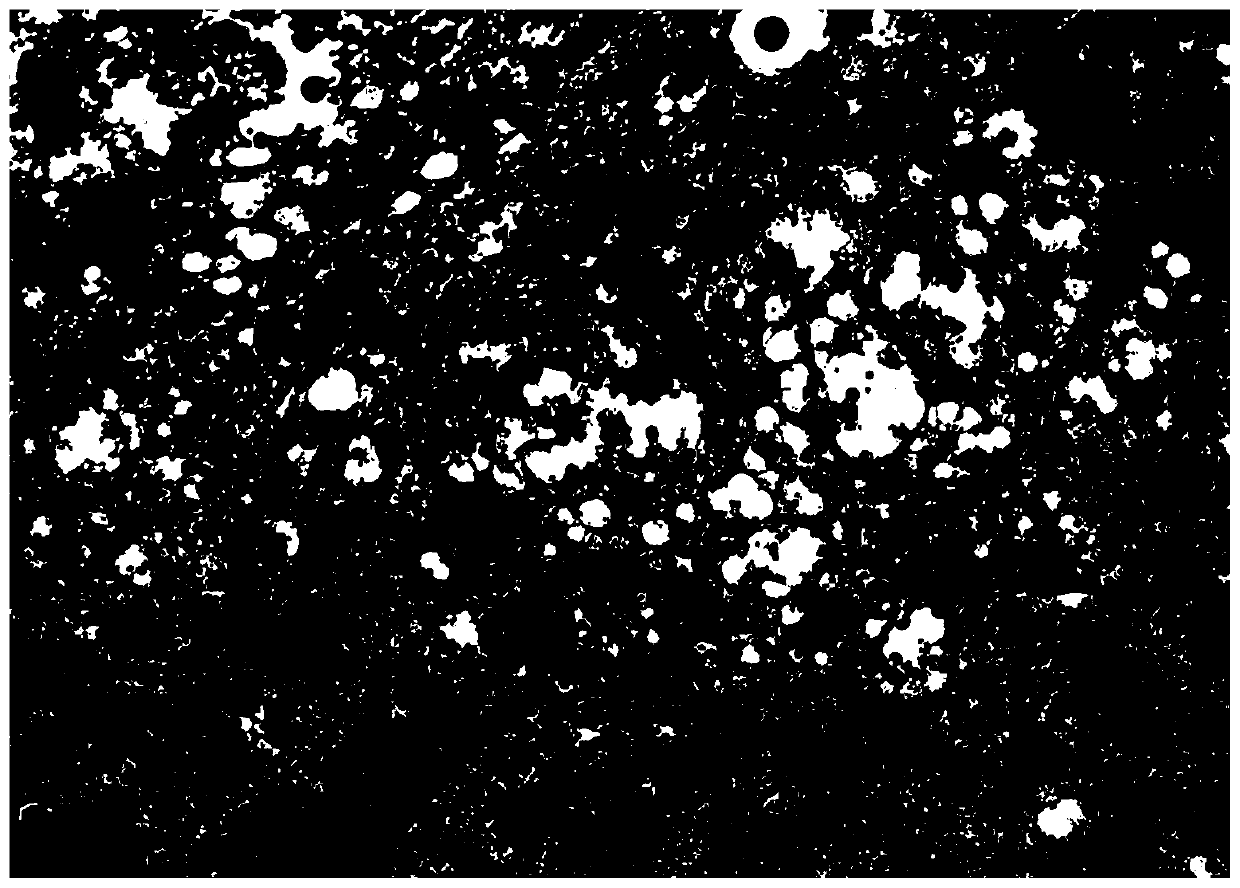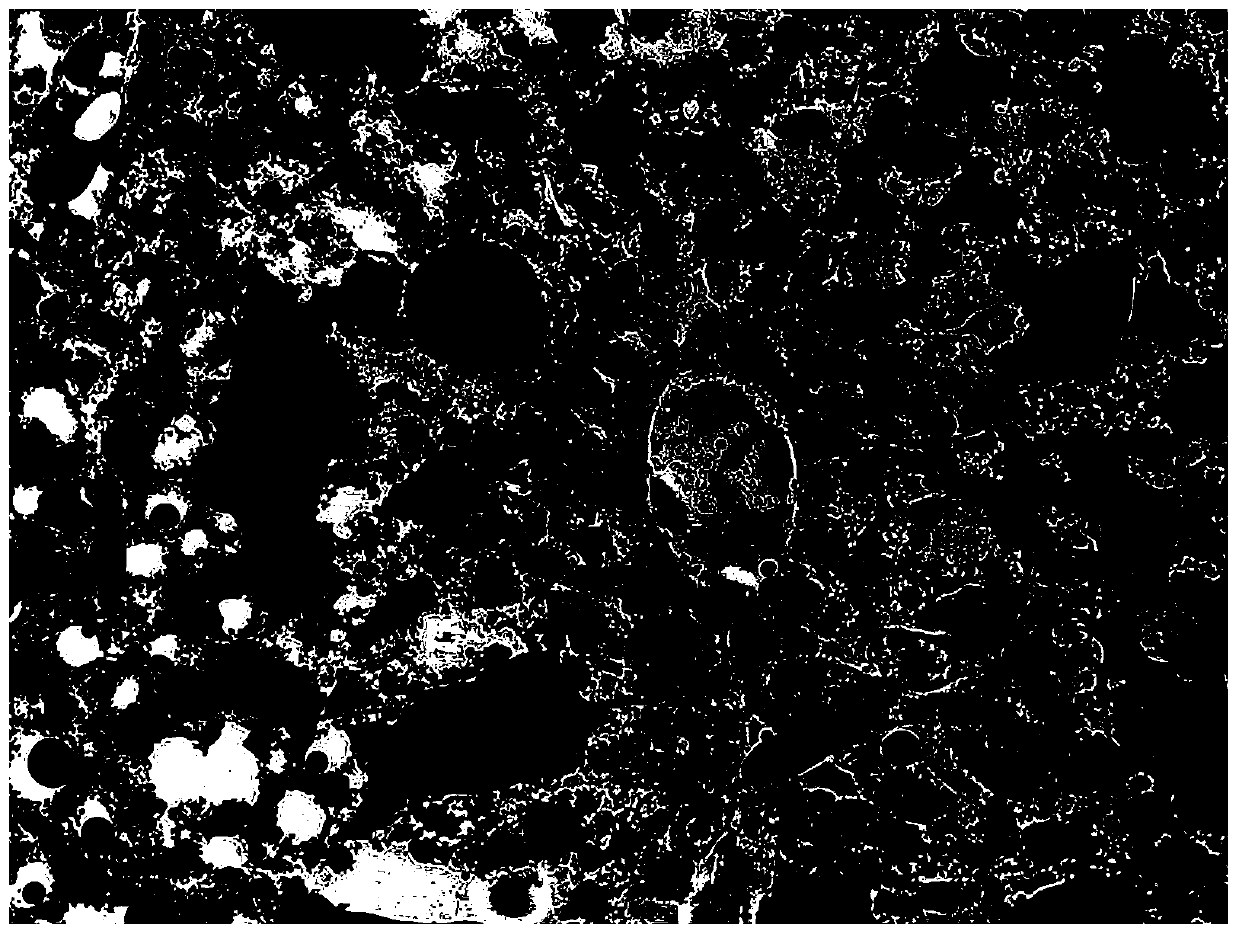Application of polyethylene glycol to dyeing animal tissue section grease
An animal tissue and polyethylene glycol technology, which is used in the preparation, sampling, and measuring devices of test samples, can solve the problems that the slices cannot be stored for a long time, the slices are easily folded, and the quality of the slices is affected. Complete, avoid shrinkage deformation, avoid the effect of displacement
- Summary
- Abstract
- Description
- Claims
- Application Information
AI Technical Summary
Problems solved by technology
Method used
Image
Examples
Embodiment 1
[0033] A kind of method utilizing polyethylene glycol to carry out the method for fat staining of mouse liver animal tissue section, comprises the steps:
[0034] (1) Take a normal healthy mouse liver tissue sample, about 0.5cm×0.5cm×0.5cm, fix it with fixative solution, wash it with running water, and absorb the water with absorbent paper;
[0035] (2) Place the mouse liver tissue sample in carbowax I (polyethylene glycol with a molecular weight of 1000), and soak it in wax for 60 minutes in an incubator at 60°C;
[0036] (3) Place the mouse liver tissue sample in carbowax II (mixture of carbowax with a molecular weight of 1500 and a molecular weight of 1000 at a ratio of 1:2), and immerse it in a 60°C incubator for 60 minutes;
[0037] (4) Place the mouse liver tissue sample in carbowax II (mixture of carbowax with molecular weight of 1500 and molecular weight of 1000 at a ratio of 1:1), and soak in wax for 60 minutes in an incubator at 60°C;
[0038] (5) Place the mouse li...
Embodiment 2
[0043] A kind of method utilizing polyethylene glycol to carry out fatty liver mouse liver slice oil staining method, comprises the steps:
[0044] (1) Immediately after fatty liver model mice were sacrificed under anesthesia, liver tissue samples were taken, about 0.5cm×0.5cm×0.5cm, fixed with fixative, rinsed with running water, and dried with absorbent paper;
[0045] (2) Place mouse fatty liver in carbowax I (polyethylene glycol with a molecular weight of 1000), and soak in wax for 90 minutes in an incubator at 55°C;
[0046] (3) Put mouse fatty liver in carbowax II (1:2 mixture of carbowax with molecular weight of 1500 and molecular weight of 1000), and soak in wax for 120 minutes in an incubator at 55°C;
[0047] (4) Put the mouse fatty liver in carbowax II (mixture of carbowax with a molecular weight of 1500 and a molecular weight of 1000 at a ratio of 2:1), and soak it in a 55°C incubator for 120 minutes;
[0048] (5) Put the mouse fatty liver in carbowax II (mixture ...
PUM
 Login to View More
Login to View More Abstract
Description
Claims
Application Information
 Login to View More
Login to View More - R&D
- Intellectual Property
- Life Sciences
- Materials
- Tech Scout
- Unparalleled Data Quality
- Higher Quality Content
- 60% Fewer Hallucinations
Browse by: Latest US Patents, China's latest patents, Technical Efficacy Thesaurus, Application Domain, Technology Topic, Popular Technical Reports.
© 2025 PatSnap. All rights reserved.Legal|Privacy policy|Modern Slavery Act Transparency Statement|Sitemap|About US| Contact US: help@patsnap.com



